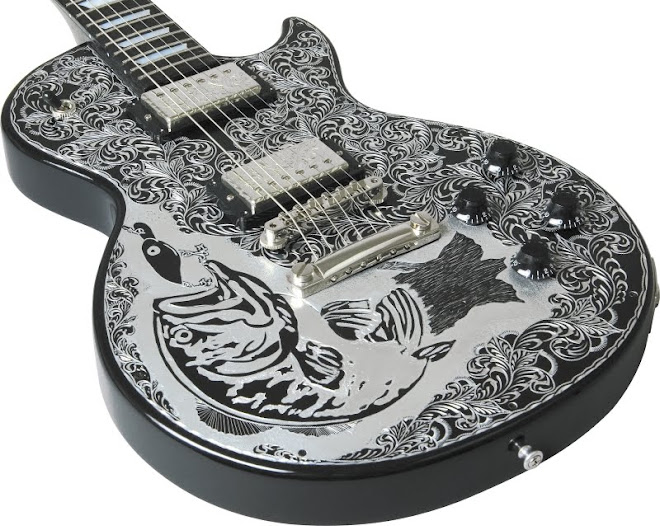 A magnetic pickup consists of a permanent magnet such as a AlNiCo, wrapped with a coil of a few thousand turns of fine enameled copper wire. The pickup is most often mounted on the body of the instrument, but can be attached to the bridge, neck and/or pickguard, as on many electro-acoustic archtop jazz guitars and string basses. The vibration of the nearby soft-magnetic strings modulates the magnetic flux linking the coil, thereby inducing an alternating current through the coil of wire. This signal is then carried to amplification or recording equipment via a cable. There may also be an internal preamplifier stage between the pickup and cable. More generally, the pickup operation can be described using the concept of a magnetic circuit, in which the motion of the string varies the magnetic reluctance in the circuit created by the permanent magnet.
A magnetic pickup consists of a permanent magnet such as a AlNiCo, wrapped with a coil of a few thousand turns of fine enameled copper wire. The pickup is most often mounted on the body of the instrument, but can be attached to the bridge, neck and/or pickguard, as on many electro-acoustic archtop jazz guitars and string basses. The vibration of the nearby soft-magnetic strings modulates the magnetic flux linking the coil, thereby inducing an alternating current through the coil of wire. This signal is then carried to amplification or recording equipment via a cable. There may also be an internal preamplifier stage between the pickup and cable. More generally, the pickup operation can be described using the concept of a magnetic circuit, in which the motion of the string varies the magnetic reluctance in the circuit created by the permanent magnet.[edit] Output
The output voltage of pickups varies between 100 mV rms to over 1 V rms for some of the higher output types. Some high-output pickups achieve this by employing very strong magnets, thus creating more flux and thereby more output. This can be detrimental to the final sound because the magnets' pull on the strings can cause problems with intonation as well as damp the strings and reduce sustain. Other high-output pickups have more turns of wire to increase the voltage generated by the string's movement. However, this also increases the pickup's output resistance/impedance, which can affect high frequencies if the pickup is not isolated by a buffer amplifier or a DI unit.


Sem comentários:
Enviar um comentário